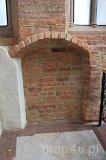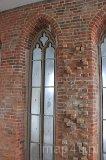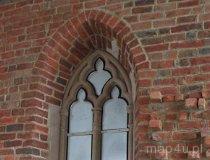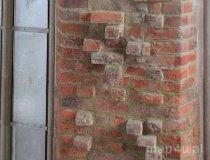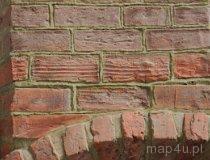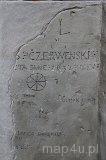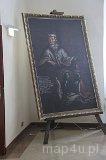Piast Castle in Racibórz - Station 04 – Prince’s House
Description
The Prince’s House is the only surviving residential wing of the castle and, together with the chapel, the oldest part of the complex. The first room, open for guided tours, is a hall, located directly adjacent to the chapel of St. Thomas Becket. The room is sited on the top floor, so you can notice the bricked door once leading to the chapel (fot.10.04.001). This entrance was used when the chapel was still a two-storey. From here you may also look at the high Gothic windows (photo 10.04.002). The stone windows frames are topped with the typical tracery (photo 10.04.003). Between the windows are present protruding bricks (photo 10.04.004). It is neither part of the decoration nor a medieval climbing wall, but proof of the existence of a partition wall in this place. It is worth paying attention also to the bricks themselves, precisely to their grooves (photo 10.04.005). These bricks are called “palcówki”, from which the workers, during the manual processing, took off the excess of clay. Traces of their fingers are best seen on the bricked door. Racibórz Castle can also boast one of the oldest graffiti in Poland (photo10.04.006). On a portion of the wall next to the bricked entrance to the chapel there are carved inscriptions of the 17th century. Probably, they are the names of the soldiers who were stationed in the castle during the Thirty Years War. There is also the theory for which the place was once a detention room, as in the adjacent chamber were held court sessions and those inscriptions may be done by convicts sitting there. In the corner of the room there is also a painting of Mieszko IV Laskonogi (photo 10.04.007), also called Plątonogi (tangled foot). The nickname originated from his long legs, unusual at that time. Piast Castle collaborates with many cultural institutions from Racibórz and surrounding areas, so that in it, you can see many works of art.
We invite you to the next rooms in which there are numerous exposures.



